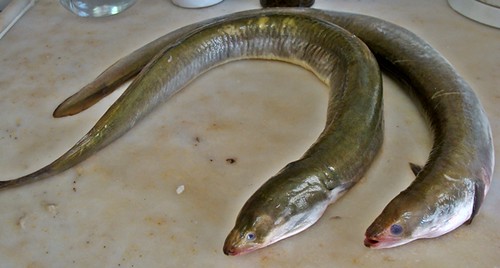
1. The Fascinating Creatures With a Venomous Tail
With over 70 species of sting rays in the world, these fascinating creatures are closely related to sharks. Sting rays are found in warm and tropical waters around the world, and come in a variety of shapes and sizes. They have flat, diamond-shaped bodies and long, whip-like tails that are equipped with venomous barbs. Sting rays feed on small fish, mollusks, and crustaceans, and use their powerful tails to defend themselves from predators.
Also → Narwhals are Unique Creatures That Feed on a Variety of Prey
Advertisement2. Unique Creatures That Feed on a Variety of Animals
Sting Rays are carnivorous creatures that feed on a variety of animals, including crustaceans, mollusks, oysters, crabs, snails, and some species of fish. They have a unique way of hunting, using their flat bodies to blend in with the ocean floor and ambush their prey. They also have a venomous barb on their tail, which they use to defend themselves against predators.
Also → Eels have a long life span and can be found in many parts of the world
3. A Beautiful and Fascinating Species
Sting rays are a fascinating species of fish that can be found in shallow brackish or salt waters, mainly in warm climates such as the Caribbean, the Gulf of Mexico, and the Mediterranean Sea. These graceful creatures have a flat, diamond-shaped body and a long, whip-like tail that can reach up to 3 feet in length. They feed on small fish, crustaceans, and mollusks, and use their venomous barbs to defend themselves against predators. Sting rays are an important part of the marine ecosystem, and their presence is a sign of a healthy marine environment.
Also → Asparagus can help relieve pain from bee stings
4. Sting Rays' Secret: 'Cryptic Behavior'
Sting Rays are fascinating creatures that spend most of their time motionless, buried in the sand. This behavior is known as 'cryptic behavior', and it helps them to avoid predators and to ambush their prey. They are able to detect vibrations in the sand, allowing them to sense when prey is nearby. This behavior also helps them to conserve energy, as they can remain motionless for long periods of time.
Also → Caimans: Powerful Predators that Feed on a Variety of Prey
Advertisement5. Sting Rays have an interesting anatomy
Sting Rays have an interesting anatomy; their eyes are located on the top of their body, while their nostrils, mouth, and gill slits are located on the underside, or 'underbelly'. This arrangement allows them to remain camouflaged in the water, as their eyes can remain above the surface while their other features remain hidden. This is an important adaptation for Sting Rays, as it helps them to avoid predators and find food.
Also → Seahorses: A Fascinating Species of Fish with Unique Abilities
6. Stingrays: 25 Years in the Wild
Stingrays are fascinating creatures that can live up to 25 years in the wild. They are often found in groups, referred to as a "fever" of stingrays, and can be seen swimming gracefully through the ocean. Stingrays are a type of cartilaginous fish, meaning their skeletons are made of cartilage instead of bone. They have a flat, diamond-shaped body and a long, whip-like tail that can reach up to 3 feet in length. Stingrays are found in tropical and subtropical waters around the world, and can be seen in shallow waters near the shore or in deeper waters.
Also → Sea Lions: Carnivorous Marine Mammals
7. Know the danger before swimming
Sting Rays have a tail located with a barb that can be serrated and sharp, and this venom can be dangerous to humans. In fact, it was so powerful that it was used as an anesthetic in ancient Greece. The barb is capable of delivering a powerful sting that can cause intense pain and swelling, and in some cases, even paralysis. It is important to be aware of the potential danger of sting rays and to take the necessary precautions when swimming in areas where they may be present.
Also → Sun-loving lizards enjoy basking in the sun
Advertisement8. Stingrays Regenerate Their Sting
Stingrays are generally docile creatures, and will only attack if they feel threatened or are attacked first. Interestingly, they are able to regrow their sting after it has been shed. This is done through a process of regeneration, where the stingray's body is able to replace the lost tissue with new cells. This process is similar to the way in which a starfish can regrow a lost limb.
Also → 25,000 Fish Species Identified
9. The Night Hunter
. Sting Rays are nocturnal hunters, using their sense of smell and ampullae of Lorenzine, special electro-receptors, to locate their prey in the dark. Once they have found their target, they use their powerful jaws to crush the shells of oysters, clams and shrimps, before consuming the succulent flesh inside.
Also → Crabs: Fascinating Species in Many Habitats
10. Female Stingrays Are Prolific Breeders
Female stingrays are incredibly prolific breeders, giving birth to two to ten pups, or 'litter', per year. The pups are born fully developed and ready to fend for themselves, with their mother providing no further care. The pups are born with their venomous barb already developed, so they are able to defend themselves from predators from the moment they are born.
Also → Carnivorous Squid Feed on a Variety of Prey
Advertisement








